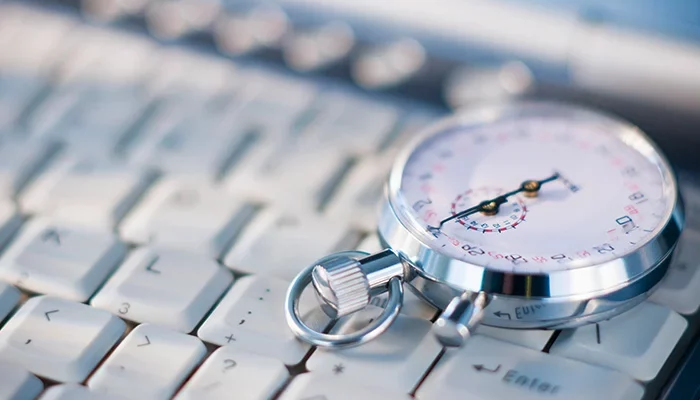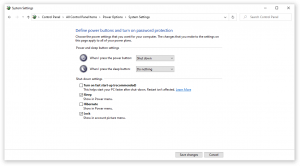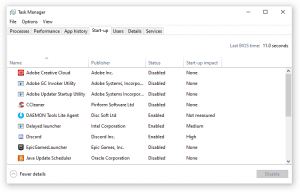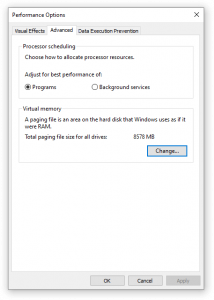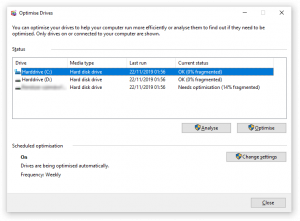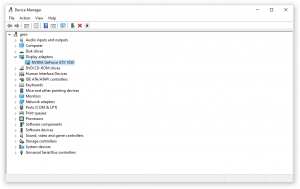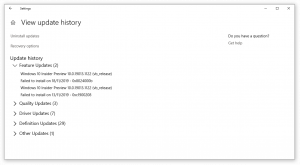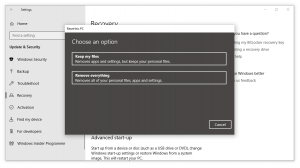Many users claim that Windows 10 is still one of the fastest operating systems available today. As a modern system, it has undoubtedly overcome many of the limitations of older versions of Windows, but it still has a long way to go. Many users have reported that Windows 10 starts slowly when the computer is restarted or turned on means Slow PC Startup . In addition, it is highly inconvenient because most expect our devices to be readily available whenever we require them.
Tip: If you know anyone experiencing similar Windows 10 Slow PC Startup issues, please refer them to our website! We want to make troubleshooting accessible to everyone, even without prior experience. So spread the word and help others to make Windows 10 a better system.
Fortunately, we know how to correct this error. In this article, we will go over several methods for fixing Slow PC Startup on Windows 10.
How to Repair a Slow PC Startup
There are numerous reasons why your computer may start up slower than usual, just as there are for most Windows 10 errors and issues. However, this also implies that the problem can be fixed in various ways.
The methods listed below are helpful for users in improving the boot time of their devices. However, we recommend you use these methods in conjunction with one another to ensure that your computer boot time is as short as possible.
What is the cause of Slow PC Startup ?
Your operating system must manage your computer’s resources (memory, disc space, and processing power) among all the programs running on it. Numerous factors can impair your computer’s performance, but they all boil down to your computer’s resources being used inefficiently.
Here are some of the issues that can cause your computer to slow down:
- RAM is running low (Random Access Memory)
- Disk drive space is running out (HDD or SSD)
- The hard drive that is old or fragmented
- There are too many background programs.
- There are too many startup programs.
- They are not keeping up with Windows or driver updates.
- Viruses or malware
- Visual effects and special effects
If your computer runs slowly, keep reading for solutions of Slow PC Startup problems.
How can I speed up my computer?
Without further ado, let’s get started troubleshooting!
Method 1: Turn off Fast Startup.
While Fast Startup was designed to improve boot times, some users have complained that it only slows down the boot process. Fortunately, you can easily disable this option.
Here are the steps mentioned to disable fast startup in Windows 10.
- On your keyboard, press the Windows + R keys. It will bring up the Run utility.
- Enter “control” and press the OK button. It will open the traditional Control Panel application.
- Check if your view mode is set to “Small icons” or “Large icons.” It will display all Control Panel items on a single page.
- Select “Power Options.”
- Click the “Choose what the power buttons do” link from the left-side panel.
- Click the link “Change settings that are currently unavailable.” You may be asked for administrator credentials.
- Uncheck the box next to “Turn on fast startup (recommended)” and click Save changes. After that, you can try restarting your computer to see if the boot time has improved.
Method 2: Turn off processes that have a high startup impact.
A third-party application installed on your computer could be causing problems with your boot time. In this case, we recommend turning off all non-Microsoft startup processes and testing them one by one to determine which is significantly slowing down boot time.
Here’s how to turn off Slow PC Startup apps in Windows 10.
Open the Task Manager by one of the following methods:
- Select “Task Manager” from the context menu when you right-click on your taskbar.
- Otherwise, use your keyboard’s Ctrl + Alt + Esc keys.
- If your Task Manager is opened in compact mode, click the “More Details” link in the bottom left corner of the window.
- At the top of the Task Manager window, select the “Startup” tab. All of the applications that launch with your computer are listed here.
- Click on an application whose “Publisher” column does not include “Microsoft Corporation.” You can also look in the “Start-up impact” column for applications with high impact measurement.
- Now, in the bottom right of the window, click the “Disable” button. The application’s status should be changed to “Disabled.”
- Repeat for each non-Microsoft app, then restart your computer.
Now, your computer should boot up without any impact-heavy apps launching automatically. In addition, it allows you to determine whether or not your boot times have improved.
If you notice that your computer boots up faster after disabling Slow PC Startup applications, one of those applications is most likely to blame for the error. Re-enable some apps and see if your boot time remains consistent until you find the culprit.
Method 3: Make changes to your virtual memory.
If your virtual memory is incorrectly configured, it may be interfering with your system’s resources. In addition, it can directly impact your boot time, making it difficult to turn on or restart your computer.
Here’s what you need to do to resolve this problem potentially.
- To open the Run application, simultaneously press the Windows + R keys on your keyboard.
- Enter “system.cpl” and click the OK button. It will launch the System Properties dialogue box.
- Navigate to the “Advanced” tab.
- In the “Performance” section, click the “Settings” button. A new window titled “Performance Options” should appear.
- Navigate to the “Advanced” tab.
- Select the “Change” option.
- Uncheck the box next to “Automatically manage paging file size for all drives.”
- Choose “Custom size,” then enter “1000” as the “Initial size” and “8192” as the “Maximum size.” Finally, to preserve your changes, select the OK button.
- Restart your computer with the automated prompt to see if your boot time has decreased.
Method 4: Defragment the hard drive of your computer.
If none of the methods above appear effective, you can try optimizing your hard drives with the defragment tool.
- Press the Windows + R keys on your keyboard to open the Run utility. Enter “dfrgui” here and press the OK button.
- Choose the hard drive to defragment, then click the “Optimize” button. We recommend beginning with the drive where Windows 10 is installed, which is usually the “C:” drive.
- Allow the defragmentation process to complete. Following that, you can optimize other drives and improve your boot times even more.
Method 5: Update the drivers for your graphics card.
It is critical to keep your drivers up to date. An outdated graphics driver may cause frustrating errors on your device, eventually leading to Slow PC Startup. Fortunately, updating these drivers is simple and requires no special skills — follow our instructions to ensure you have the most recent version of your driver.
- Automatically update graphics card drivers.
- Press the Windows + X keyboard shortcuts, then select “Device Manager” from the context menu.
- Expand the section “Display Adaptors.” Your graphics card should be listed as a device here.
- Select “Update driver” from the context menu of your graphics card.
- Select “Search automatically for updated driver software,” and Windows 10 will find the updated driver for you.
Manually update graphics card drivers.
First, determine what graphics card you’re using. Then, if you don’t already know the exact model, take the following steps:
- Press the Windows + R keys on your keyboard to open the Run utility. Enter “dxdiag” and press the OK button.
- Your screen should now display the DirectX Diagnostic Tool. To access the “Display” tab, use the header menu.
- Check “Name” in the “Device” section. The manufacturer and graphic card model should be visible. Keep this in mind as you proceed.
After identifying your graphics card, go to the manufacturer’s website and look for a driver download page. We’ve compiled a list of popular graphics card manufacturers, along with links to their download pages:
- A page for Intel Drivers and Software
- A page for downloading NVIDIA drivers
- AMD Support and Drivers
- Using the built-in search function, locate your graphics card and download the most recent driver compatible with your system.
- You can install the most recent driver by double-clicking on the downloaded file and following the on-screen instructions.
Method 6: Ensure that Windows 10 is updated
Simply upgrading to the most recent Windows 10 release can help reduce the time it takes for your device to boot. In addition, this can fix known bugs or Slow PC Startup, add new and exciting features, close security gaps, and more.
Here’s how to upgrade to Windows 10.
- Select “Settings” from the Start menu. Alternatively, you can also use the Windows + I keyboard shortcut.
- Select the “Update and security” tile.
- Keep the default “Windows Update” tab selected.
- Select the “Check for updates” option. When an update is discovered, click the “Install” button and wait for Windows 10 to download and install it.
- After the PC is updated, please restart your computer and how long it takes to boot up. We recommend running at least two tests, as your system may still need to re-configure after an update, making booting Slow PC Startup.
Method 7: Install Windows 10 from scratch.
While this is the least desirable option, it can be advantageous when dealing with serious system problems. Unfortunately, many users resort to resetting Windows 10 to get a fresh start and resolve messy issues that would otherwise necessitate hours of troubleshooting.
Here’s how to reset Windows 10 while retaining all of your data.
- Select “Settings” from the Start menu. Alternatively, you can also use the Windows + I keyboard shortcut.
- Select the “Update and security” tile.
- Navigate to the “Recovery” tab.
- A header that says “Reset this PC” should appear. Click the “Get started” button to the right of it.
- You can decide whether or not to keep personal files. Both options remove your applications, but you can easily keep personal documents safe.
- Follow the on-screen instructions to reset your computer. You should notice an improvement in the time it takes your device to boot up.
We hope this guide helped reduce the startup time of your device. But, again, we recommend using multiple methods in tandem to achieve the best results.
If your Slow PC Startup in the future, feel free to return to our article and try some other fixes. We recommend contacting Microsoft’s customer support team or upgrading your computer if nothing works.
Last Thoughts
Do you want to learn more about Windows 10 Slow PC Startup ? You can read about how to fix Windows login issues in our dedicated Help Center section.
Look no further than techfixes if you’re looking for a software company you can rely on for its integrity and honest business practices. We are a Microsoft Certified Partner and a BBB Accredited Business dedicated to providing our customers with a dependable and satisfying experience with the software products they require. We will be there for you.
ALSO SEE:Computer Randomly Restarts 2022
